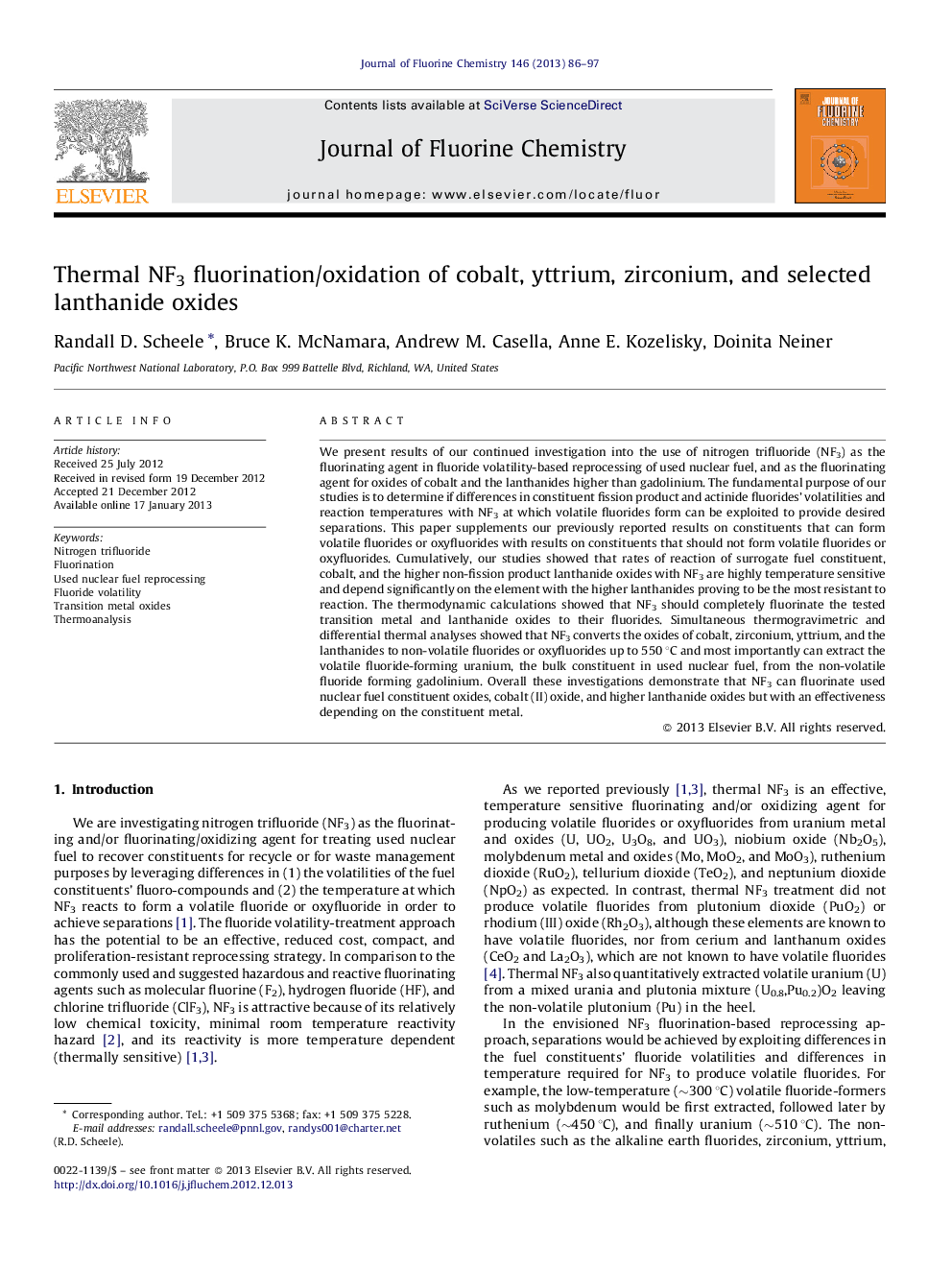| Article ID | Journal | Published Year | Pages | File Type |
|---|---|---|---|---|
| 1314786 | Journal of Fluorine Chemistry | 2013 | 12 Pages |
We present results of our continued investigation into the use of nitrogen trifluoride (NF3) as the fluorinating agent in fluoride volatility-based reprocessing of used nuclear fuel, and as the fluorinating agent for oxides of cobalt and the lanthanides higher than gadolinium. The fundamental purpose of our studies is to determine if differences in constituent fission product and actinide fluorides’ volatilities and reaction temperatures with NF3 at which volatile fluorides form can be exploited to provide desired separations. This paper supplements our previously reported results on constituents that can form volatile fluorides or oxyfluorides with results on constituents that should not form volatile fluorides or oxyfluorides. Cumulatively, our studies showed that rates of reaction of surrogate fuel constituent, cobalt, and the higher non-fission product lanthanide oxides with NF3 are highly temperature sensitive and depend significantly on the element with the higher lanthanides proving to be the most resistant to reaction. The thermodynamic calculations showed that NF3 should completely fluorinate the tested transition metal and lanthanide oxides to their fluorides. Simultaneous thermogravimetric and differential thermal analyses showed that NF3 converts the oxides of cobalt, zirconium, yttrium, and the lanthanides to non-volatile fluorides or oxyfluorides up to 550 °C and most importantly can extract the volatile fluoride-forming uranium, the bulk constituent in used nuclear fuel, from the non-volatile fluoride forming gadolinium. Overall these investigations demonstrate that NF3 can fluorinate used nuclear fuel constituent oxides, cobalt (II) oxide, and higher lanthanide oxides but with an effectiveness depending on the constituent metal.
Graphical abstractNF3 extracts U from gadolinia dissolved in urania by fluoride volatilization.Figure optionsDownload full-size imageDownload as PowerPoint slideHighlights► Thermodynamic calculations indicate NF3 should convert selected transition metals and lanthanides to fluorides. ► NF3 fluorinates oxides of Co(II), Zr, Y, and lanthanides to the fluoride or oxyfluoride. ► NF3 extracts U from Gd as gadolinia dissolved in urania. ► NF3 reaction temperature depends on metal. ► NF3 can separate volatile fluorides from non-volatile fluorides or oxyfluorides.
